4 Types of Pipes Used for Chilled Water (New Technology)
There are a few types of pipes used for chilled water. Chilled water pipes (CHW pipe) are made of different materials at different manufacturing standards. Hence, they have different characteristics for different applications. Though I have some experience with chilled water pipes, I spoke with some of my friends who are experts in chilled water pipes for this post.
The most common type of pipe used for chilled water is carbon steel pipes. Carbon steel chilled water pipes are commonly referred to as black steel pipes because of the black color surface of the carbon steel.
However, galvanized carbon steel pipes that are silver in color, can be used for chilled water when corrosion resistance is required.
Many people thought that black steel pipes are different from carbon steel pipes. They did not realize that both pipes are actually the same thing when used in the chilled water system.
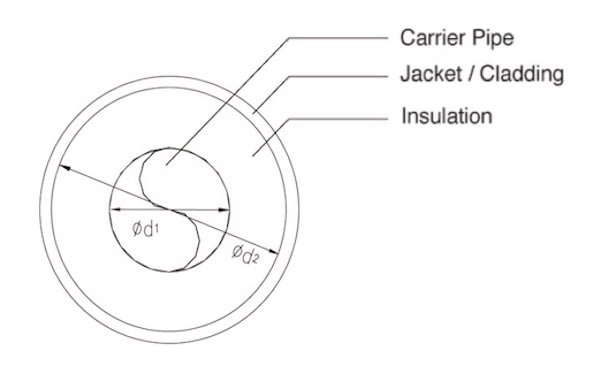
Most chilled water pipes are pre-insulated. Just to be clear, we are talking about the carrier pipe of pre-insulated pipes here. With that said, let’s look at the different types of pipes used for chilled water and unpack the myth.
1. Carbon Steel Pipe (Black Steel Pipe)
Steel pipes are made of a mixture of alloy and carbon. When there is more carbon in a steel pipe, it is referred to as a carbon steel pipe. In contrast, an alloy steel pipe has other elements in it. Our friend Jonathan helps me to differentiate them in his post.
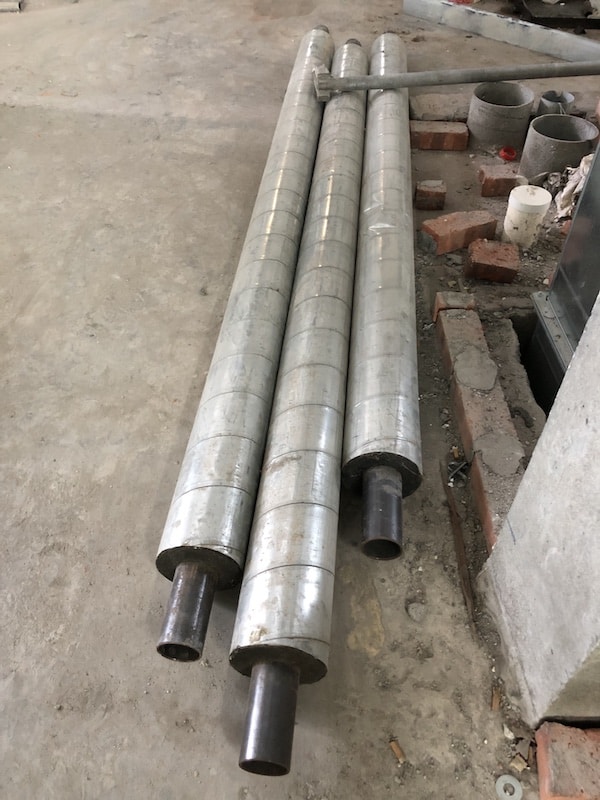
Due to oxidation, carbon steel pipes are naturally black in color. So, most of us just call them black steel pipes.
What’s funny is when you tell contractors to buy carbon steel chilled water pipes, they ask you what is carbon steel? It shows how much people got used to calling them black steel pipes.
“We use black steel pipes for chilled water, not sure about carbon steel pipes.”
Contractors
Carbon steel pipes or black steel pipes are not galvanized which means that they rust. Many chilled water pipes had already rusted mildly when they arrive at the site. They were kept in a warehouse for quite some time before the supplier delivers them to the site.
However, a plastic end cap is usually put at both ends of a chilled water pipe to slow down the rust and also, makes them look a bit nicer and not looking like an old stock or something.
Nevertheless, no need to worry about the rust because upon the completion of chilled water pipes, we’ll flush them to clear out all the rust. Then, the chemical treatment of the chilled water system ensures that the rust does not build up (ideally).
Carbon steep pipes are used to carry chilled water supply and return. Hence, they are also known as CHWS pipe which stands for chilled water supply pipe and CHWR pipe which stands for chilled water return pipe.
For chilled water applications, carbon steel pipes have three types. Each type is used for different pipe sizes. At the same time, they are manufactured in accordance with different pipe standards.
A) Welded Mild Steel to BS 1387 Class C
Chilled water pipe sizes from 15mm to 150mm are using welded mild steel pipes manufactured in accordance with BS 1387 Class C standard. Such manufacturing technique involved welding as opposed to seamless which is done through cold draw or hot roll.
Carbon steel mainly has three types which are low carbon, medium carbon and high carbon. Low carbon steel is usually referred to as mild steel.
Some people break carbon steel down into 4-5 types, each with a different percentage of carbon but we don’t need to go into that detail.
BS 1387 Class C is also called BS 1387 Heavy Gauge. The “Class C” is equivalent to the “Heavy Gauge”. They are the same thing. Nevertheless, if you are looking for a cheaper option, Class B or Medium Gauge is feasible.
B) Welded Carbon Steel to JIS G3452
Chilled water pipe sizes from 200mm to 450mm are using welded carbon steel pipes manufactured in accordance with JIS G3452 standard. Such manufacturing techniques also involved welding and have weld lines.
Pipes are more suitable for transferring water rather than gas when you have weld lines.
Some manufacturers use welded carbon steel to JIS G3452 only for chilled water pipe sizes from 200mm to 350mm. However, pipe sizes from 15mm to 450mm are available for JIS G3452 standard.
Welded carbon steel pipes to JIS G3452 are considered standard carbon steel pipes. They don’t split further into different types.
Often, this type of chilled water pipe accounts for the largest percentage of the overall chilled water pipe cost due to the quantity and unit rate.
C) ERW Carbon Steel to API 5L Grade B
Chilled water pipe sizes from 500mm to 600mm are using ERW (electric resistance welded) carbon steel pipes manufactured in accordance with API 5L Grade B standard. Such manufacturing techniques also involved welding and have weld lines.
Actually, welded carbon steel pipes are the same as ERW carbon steel pipes.
The reason why the word “ERW” is added for this type of pipe is to differentiate it from seamless carbon steel pipes because both the ERW and seamless chilled water pipes in this pipe size category are often used frequently.
Projects that required high build quality may call for seamless carbon steel pipes that are about 20% better at handling working pressure. Furthermore, seamless carbon steel pipes hardly leak because there are no weak weld points.
Hence, seamless pipes are often used for transferring gas.
However, seamless pipes are more expensive than ERW or welded pipes. So, most chilled water pipes are using ERW or welded carbon steel pipes instead of seamless carbon steel pipes.
The pipe wall thickness for chilled water pipes to API 5L Grade B can be either 7.9mm or 9.5mm. Needless to say, 9.5mm wall thickness offers better strength at a higher cost.
Here is a summary of pipe standards for different pipe sizes:
| Pipe Size | Pipe Standard | Sub-Standard |
|---|---|---|
| 15mm to 150mm (1/2″ to 6″) | BS 1387 | Class C (Heavy Gauge) |
| 200mm to 450mm (8″ to 18″) | JIS G3452 | Standard |
| 500mm to 600mm (20″ to 24″) | API 5L | Grade B |
On a side note, if you want to quickly learn about chilled water system, you can get my Chilled Water System (eBook). If you’re into design, you can enroll in my Chilled Water System Design Course where I teach you various design procedures with tons of examples.
Chilled Water System Design Course
Learn how to design a chilled water system with AHU/FCU selection, chiller sizing, cooling tower sizing, pump sizing, piping design, ductwork design and more.
Since the pipe standard is depending on the pipe size, I recommend you read my post about how to size chilled water pipe if you want to cover everything about chiller pipe.
2. Galvanized Carbon Steel Pipe
When carbon steel pipes or black steel pipes are coated with a layer of zinc, they are galvanized and become corrosion resistant. The pipe standards used are the same, just galvanized.
Galvanized carbon steel pipes are more often used for the condenser water of a chilled water system. They are known as CWP or condenser water pipe.
However, chilled water pipes that are exposed to weather or located near the sea, may use galvanized carbon steel pipes to withstand the harsh working environment.
Compared to carbon steel pipes, galvanized carbon steel pipes are more expensive. They can be easily differentiated from carbon steel pipes by their silver color appearance.
On a side note, galvanized carbon steel pipes used for condenser water look very different from chilled water pipes because they are not insulated.
3. Stainless Steel Pipe
Stainless steel pipes are rarely used for chilled water. They are significantly more expensive than both galvanized and non-galvanized carbon steel pipes. Stainless steel pipes are more often used for hot water systems.
Stainless steel pipes are even better in corrosion resistance than galvanized carbon steel pipes. Hot water is used for people to bathe, wash hands and dishes. Hence, contamination in water is strictly not allowed.
Nevertheless, seaside chilled water pipes may choose to use stainless steel instead of galvanized steel to better withstand the corrosive working environment.
Alright, so far we covered the most common type of pipe used for chilled water which is the non-galvanized carbon steel pipe followed by the galvanized steel pipes. Then, stainless steel pipes are an option but rarely used for chilled water due to the higher cost.
However, a recently-marketed type of pipe was introduced to replace the traditional carbon steel pipe. This new pipe is the pre-insulated HDPE (high-density polyethylene) chilled water pipe.
I was introduced by a friend expert in HDPE pipes. At first, I was skeptical just like everyone else. Then, I quickly realized that this type of pipe is actually significantly better than carbon steel pipes.
It’s exciting! So, let’s dive into HDPE chilled water pipe details.
4. HDPE Pipe (NEW)
Some people may be familiar with HDPE pipes because the jacket/cladding of underground chilled water pipes is made of HDPE material. But, the HDPE pipe I’m going to talk about is not the jacket but the carrier pipe.
The carrier pipe of pre-insulated HDPE chilled water pipes is made of high-density polyethylene. Polyethylene itself is completely recyclable and has no negative environmental effects.
Furthermore, HDPE life expectancy is more than 50 years.
While traditional carbon steel pipes are joined by welding, new HDPE chilled water pipes are joint like legos.
Basically, you hang two HDPE pipes and leave a gap for the socket. Then, you push both pipes into a socket and use a sort of heating machine to fuse the joint.
Such a jointing method is more or less similar to how plumbers joint PPR pipes. You’ll be given all the pre-insulated joints such as elbows, reducers and sockets. Then, you’ll need a jointing machine for the fusion.
Check out the below video on how the pre-insulated HDPE pipe is installed:
Overall, the installation process is faster, cleaner and safer. However, this new type of pipe has some drawbacks.
As you may have guessed, HDPE pipes are expensive. With all the pre-insulated joints and machinery, the whole piping system material cost is expected to be about 40-50% higher than traditional carbon steel pipes.
Thus, HDPE pipes are said to have a higher barrier of entry. The initial cost is extremely important when it comes to construction projects. Hence, the adoption rate is slow.
However, labor cost and installation time are reduced drastically with HDPE pipes which may be able to justify the higher material cost.
Furthermore, plastic pipes won’t rust or corrode over time. So, there is a saving on the maintenance of the chilled water system. Hence, the return on investment may be attractive.
Nevertheless, using HDPE material for chilled water pipes may be unheard of in many regions of the world. Although the initial cost is higher, I do think HDPE pipes overall are better than carbon steel pipes.
Conclusion
The most common type of pipe used for chilled water is carbon steel pipes. Most chilled water pipes are non-galvanized and rust over time. But, the chemical treatment of the chilled water system keeps the rust under control.
If corrosion resistance is required, carbon steel chilled water pipes can be galvanized. Otherwise, stainless steel pipes are an option but they are very expensive.
A new HDPE pipe is coming into the chilled water pipe market to replace carbon steel pipes. HDPE pipes are costly but they offer lower labor costs and shorter installation times.
HDPE pipes are beneficial to contractors and building owners. However, HDPE pipes must be able to justify the return on investment or else, the adoption rate will be slow.
Speaking of chilled water pipes and chilled water system, a relevant topic is pressure. If you are interested, I suggest you check out my post on closed loop chilled water system. It’ll help you to understand pressure better.
Once again, you can get my Chilled Water System (eBook) to quickly learn more about chilled water system. But, if you want to learn how to design a chilled water system from start to end, I encourage you check out my Chilled Water System Design Course.
Chilled Water System Design Course
Learn how to design a chilled water system with AHU/FCU selection, chiller sizing, cooling tower sizing, pump sizing, piping design, ductwork design and more.
If you have anything to add (or ask) about this topic, leave a comment down below!


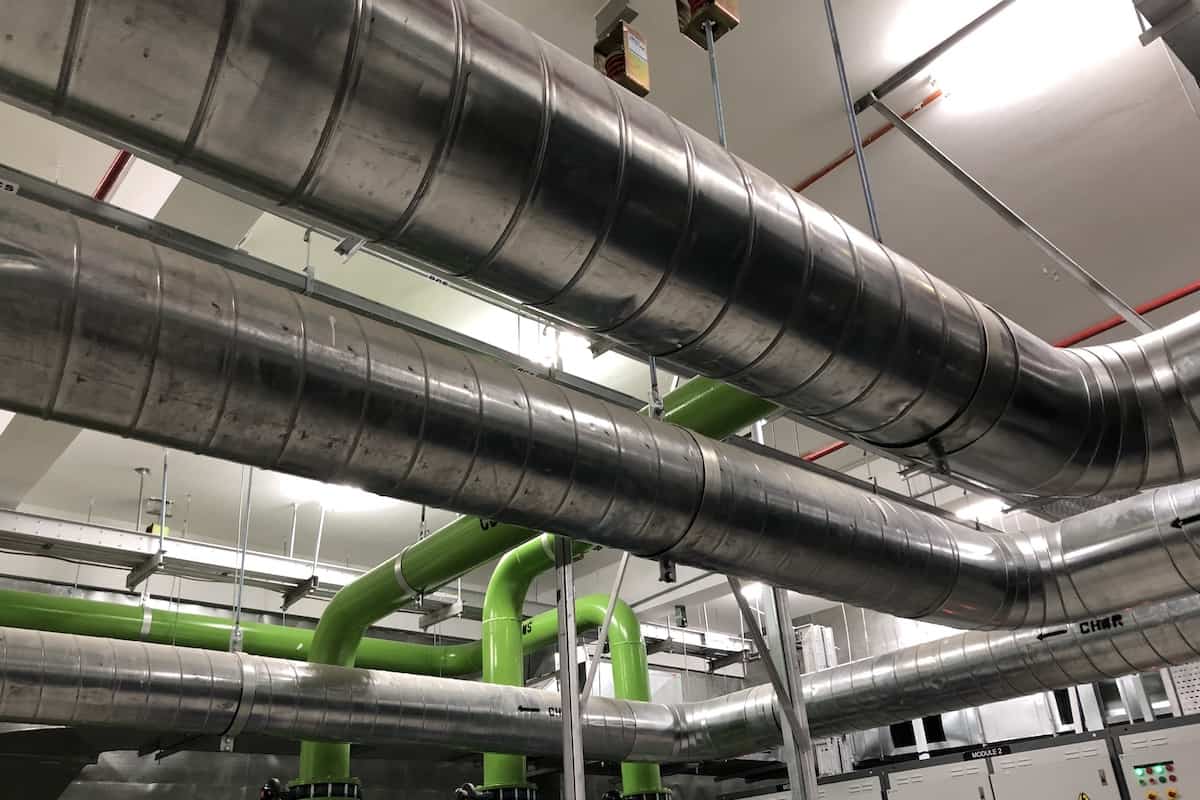
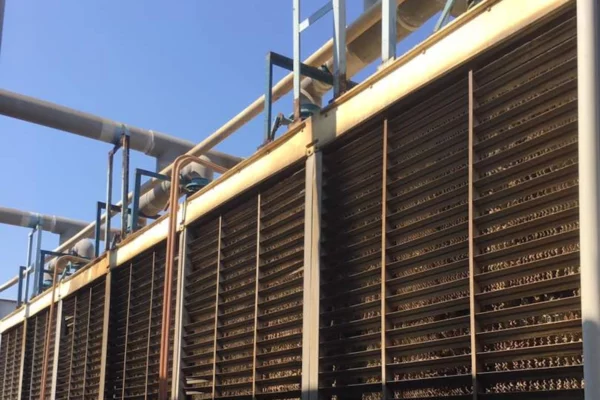
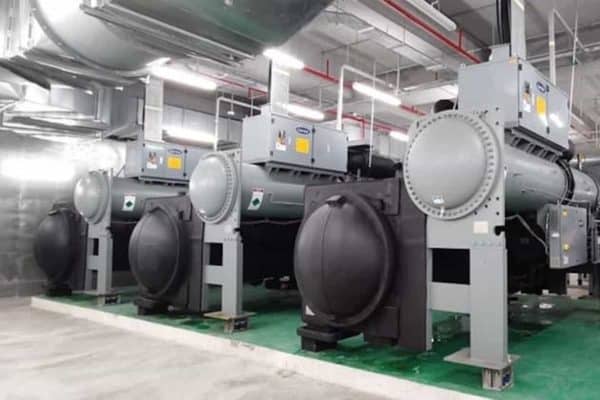
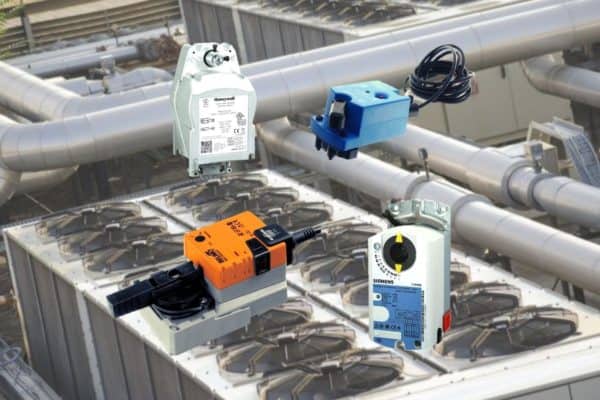
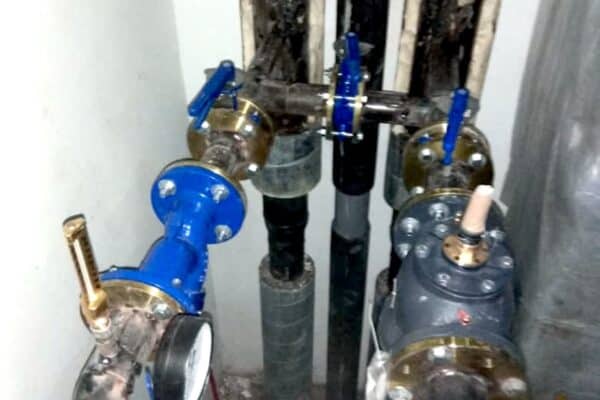
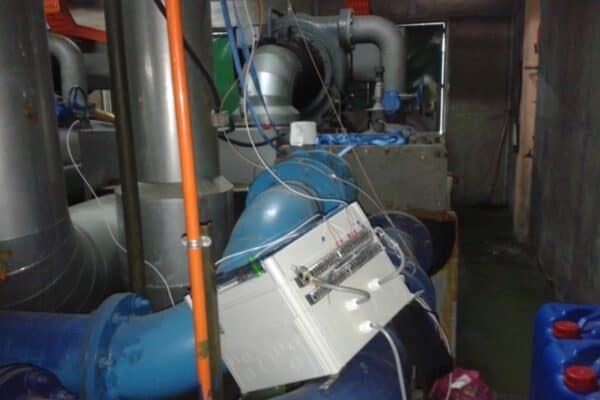
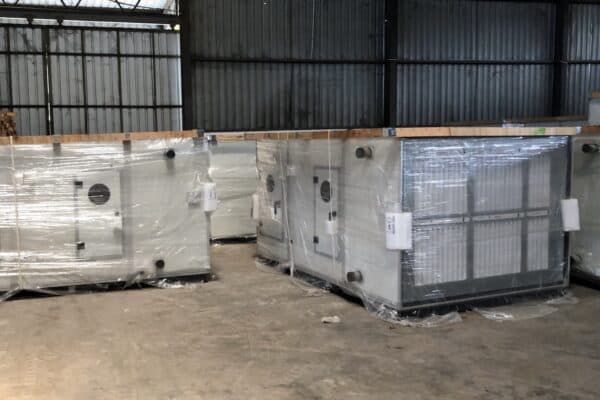

Adipoli